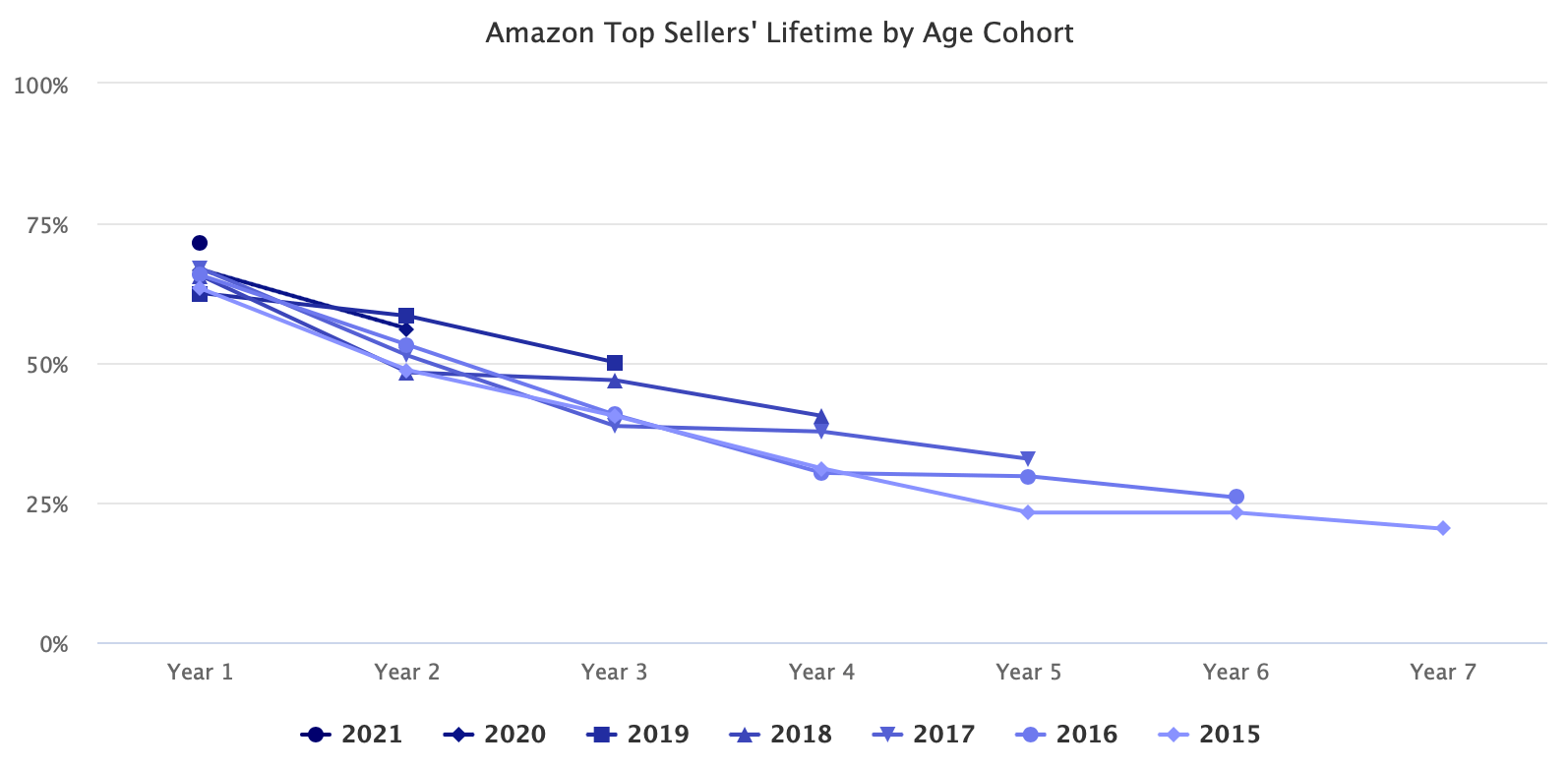Many of the top Amazon third-party sellers have been at the top for nearly a decade. They persevered despite growing competition, increasing fees, and other headwinds.
20% of the top 10,000 sellers on Amazon in the U.S. have been at the top for over seven years, as long as Marketplace Pulse has been tracking the top sellers. The other 80% couldn’t retain their position, but most didn’t give up on Amazon - over 60% of the top sellers in 2015 are still active today.
As a number, 20% appears small. However, small businesses fail for a myriad of reasons. Not only have those third-party sellers not failed, but they have kept up with Amazon’s pace of growth by staying as one of the top sellers for nearly 3,000 days. That means long-term success on Amazon is not only achievable but not rare.

Year 3, to pick one, in the chart above, counts the number of top sellers still in the top three years later. For example, 50% of the top sellers in 2019 were still among the top in 2022, 47% of 2018 top sellers were in the top in 2021, and so forth. Year 7 counts the number of top sellers from 2015 that were still in the top in 2022, which was 20%.
The Amazon marketplace is simultaneously a chaos of thousands of new sellers joining daily and a place where some sellers continue to adapt. For example, the role of advertising has drastically increased over the past five years (and contributed to margin pressure). Sellers’ most common business model also transitioned from resellers to private label sellers to brand builders.
Longtime success of top sellers could lead to saturation. In a saturated marketplace, a seller can only grow by taking market share from competitors. On Amazon, the expanding overall marketplace GMV allows new sellers to grow without taking away sales from the existing sellers. In some niches, that’s less true, but overall the whole pie is expanding faster than any one seller can own.
The thousands of sellers joining Amazon daily also mean hundreds of thousands of new brands and trademarks in the U.S. every year. But that chaos of using Amazon as an R&D and market-fit discovery channel eventually produces sellers that stay around for years.

